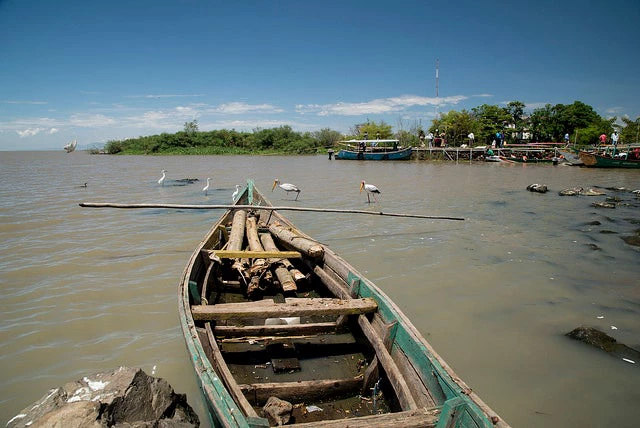
Photo: Peter Kapuscinski / World Bank
Water, climate, and finance know no borders. This brings both challenges and opportunities. When it comes to freshwater, a majority of the world’s surface water flows in transboundary basins, spanning multiple federal states and countries. At the same time, most impacts from climate change are felt through the global water cycle and sub-cycles. Thus, transboundary cooperation is crucial for strengthening climate resilience. And, when done appropriately, riparian countries and river basin organizations (RBOs) can harness their unique attributes to secure adaptation financing from a range of sources.
For decades, countries have been addressing water-related development challenges through national efforts and transboundary cooperation. However, increased pressure on water resources due to factors such as population growth and climate change means that existing and new water management and infrastructure need to fulfill at least two purposes -- serving people’s needs and providing security against extreme hydrological events, such as droughts and floods. The hydrologic links that connect physical territories, transboundary rivers, and lake basins offer opportunities for countries to tackle water-related challenges, address climate change adaptation, and strengthen collaboration.
Due to their nature, transboundary basin projects come with a variety of nuances and complexities. These include: uniqueness of each hydrologic system, the involvement of multiple countries, different legal responsibilities, structures and institutional mandates for implementation, but also the opportunities of sharing benefits and costs.
At the same time, the transboundary context offers some risk-mitigation options not available in single-country projects, especially when strong RBOs are in place. Tools such as already existing cooperation agreements, risk-sharing by all involved parties, and additional resource leveraging can help ease the burden placed on a single actor.
RBOs can often support countries’ adaptation and resilience-building beyond what each individual country could achieve on its own, because they can address water related challenges at basin scale. RBOs are often uniquely positioned to carry out needs and vulnerability assessments, basin planning, adaptation strategy development, project identification, prioritization and preparation, as well as coordinate and/or carry out project implementation. These are all key to effective transboundary basin management and to avoiding maladaptation.
Several countries sharing transboundary basins (particularly those with established RBOs) are already taking cooperative approaches to addressing climate change , such as the Niger, Lake Victoria, and the Drina Basins. By taking a basin approach to planning instead of pursuing national planning priorities, they can pinpoint where interventions can most effectively be targeted, ensure benefits are maximized, and help reduce costs. And where RBOs are mandated to act on behalf of their member countries, they serve as one-stop shop contact point also for donors and other financing partners.

07/12/2018, AfDB Pavillion
A new report Financing climate change adaptation in transboundary basins: Preparing bankable projects, part-funded by the Global Water Security & Sanitation Partnership (GWSP), prepared jointly by the World Bank with other development partners, including the African Water Facility, International Network of Basin Organizations, the Netherlands, Switzerland, and United Nations Economic Commission for Europe, highlights some good practices for countries seeking to access financial resources for climate adaptation in a transboundary river, lake, or aquifer basin context. Prepared as an outcome of a joint workshop in Dakar in June 2017, it acts as a guide for those interested in accessing grant and concessional financing. And it makes recommendations for preparing bankable adaptation project proposals, such as:
- Ensuring climate adaptation–specific design and scope of proposals by identifying and describing the climate change impacts directly responded to by the adaptation project and demonstrating the benefits of a transboundary approach;
- Understanding the complex financing landscape and establishing relationships with financing partners for successful resource mobilization from the wide range of, yet limited, public and private financing sources available;
- Aligning projects with existing climate and development strategies and policies as the majority of financiers require that project proponents demonstrate alignment with existing policies and plans; and
- Capturing co-benefits of the project as proposals that have multiple co-benefits are attractive to financiers. For climate adaptation projects, this often includes mitigation, health, water resources management and socio-economic development, among others. This can also involve the pooling of different projects that are proposed by individual riparian countries and are beneficial for the basin.
As outlined in the Action Plan on Climate Adaptation and Resilience , climate adaptation and strengthening resilience are key priorities for the World Bank, as well as for many of its development partners. Financiers frequently work with RBOs as they operate across boundaries – and can help build bridges among all concerned stakeholders when it comes to accessing and implementing adaptation financing.
For more information, read the full report.



Join the Conversation